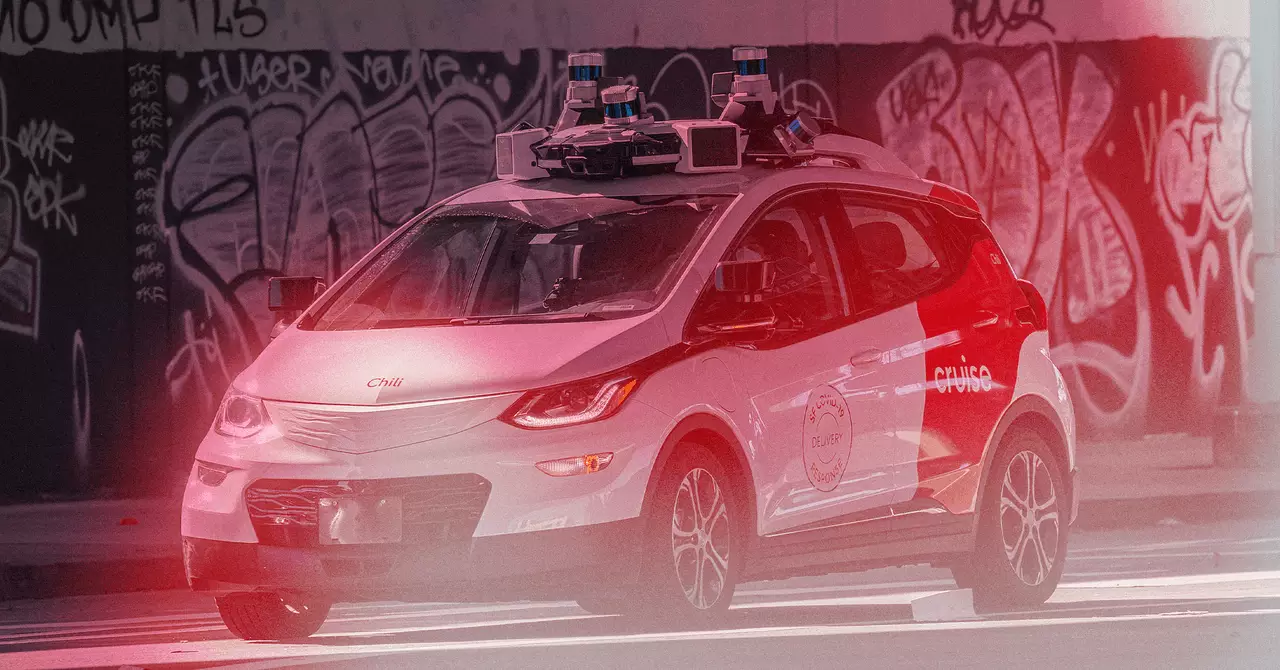The narrative of autonomous vehicles is often painted as a linear progression toward a driverless utopia. Yet, behind the glossy headlines and ambitious forecasts lies a complex landscape riddled with setbacks, lessons, and strategic recalibrations. General Motors’ recent activities, involving repurposed Cruise vehicles, exemplify a pragmatic approach to innovation. Instead of abandoning their investments after a high-profile setback, GM is cleverly reorienting their assets to extract maximum value. This pivot not only signifies resilience but also highlights a nuanced understanding of the autonomous ecosystem’s inherent challenges.
Cruise’s bold attempt at creating a fully autonomous robotaxi fleet met with significant hurdles, culminating in tragic incidents and regulatory setbacks. The incident that led to Cruise’s operational freeze revealed the harsh realities of deploying unproven technology at scale. However, GM’s response demonstrates that failures in the autonomous vehicle industry are catalysts for recalibration rather than endpoints. These repurposed vehicles are now serving as test beds for advanced driver-assistance systems (ADAS), proving that the value of such technology extends beyond the initial concept of driverless taxis. This strategic shift underscores a pragmatic recognition that incremental improvements in safety and automation often wield more immediate impact than rapid deployment of full autonomy.
Utilizing Existing Assets for Future Gains
The decision to reuse a fleet of existing vehicles is not merely cost-effective but fiercely innovative. Already equipped with lidar sensors, cameras, and numerous high-tech modules during their time as Cruise robotaxis, these vehicles are now transitioning into research tools. This pragmatic reuse involves outfitting them with new software and testing environments while maintaining their core hardware — a testament to the flexibility of modern automotive engineering and software development.
This move resonates deeply with the broader trend in technology sectors where hardware is increasingly repurposed, not discarded. It reflects a mindset shift: instead of viewing failure or abandonment as the end, automotive companies are embracing a circular approach where assets evolve, adapt, and continue contributing to technological progress. GM’s strategy also offers a glimpse into how the industry might handle the high costs and uncertainties associated with pioneering autonomous technology. By giving these vehicles a second life, GM maintains an ongoing research advantage without the enormous fresh investments required to develop new hardware from scratch.
Balancing Progress with Caution
While GM’s new approach is undoubtedly resourceful, it also highlights the delicate balancing act in autonomous vehicle development. Overestimating the capabilities of current tech led to overconfidence, bureaucratic missteps, and tragic consequences in some cases. Now, GM appears to be adopting a more measured approach—testing driver assistance systems in controlled environments before risking public safety.
This cautious evolution may border on a strategic necessity rather than a sign of complacency. As GM integrates these repurposed vehicles into real-world testing, the company signals an understanding that autonomous technology requires continuous, incremental validation. It’s a recognition that safety, reliability, and public trust cannot be rushed. Moreover, GM’s emphasis on developing advanced driver-assistance systems aligns with a broader industry trend—one that prioritizes near-term passenger safety while gradually paving the way toward full autonomy.
The Road Ahead: A New Chapter or a Detour?
GM’s pivot raises essential questions about the future trajectory of autonomous vehicles. Is this a temporary workaround, or does it represent a strategic redefinition of how we approach driverless technology? While some industry players, like Waymo and Tesla, pursue aggressive scaling of fully autonomous systems, GM’s approach suggests an alternative: leveraging current hardware and software to steadily improve safety and automation, potentially resulting in more reliable, widely accepted technology.
This strategy could prove advantageous in a cautious market increasingly demanding safety and transparency. It emphasizes an industry that learns from its missteps and channels their lessons into tangible, practical outcomes. The repurposed Cruise fleet exemplifies a shift from risky, front-facing innovation to a more sustainable, iterative process. Such a trajectory might ultimately foster more public trust, regulatory acceptance, and technological maturity, forming the foundation for a genuinely resilient autonomous driving ecosystem.
—
By repurposing its vehicle fleet, GM demonstrates that innovation is rarely a straight path. It’s marked by recalibration, resourcefulness, and a willingness to learn from failures. This strategic adaptability not only preserves the company’s investment but also pushes the boundary of what’s realistically achievable in the near term. Though the road may be winding and fraught with setbacks, GM’s latest moves hint at a future where autonomous technology matures through careful experimentation rather than breathtaking leaps—an approach that could reshape how we think about automotive innovation altogether.

